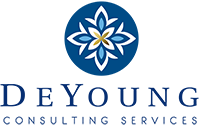I recently conducted a series of team building sessions with a government agency’s training and outreach teams. These sessions were designed based on a needs assessment I conducted with leadership and their employees. The supervisor believed, and the needs assessment confirmed, that there was a lack of cohesion on the team, particularly between new comers and those who had been on the team for many years. The assessment also indicated that there was no clear definition of roles for team members. The lack of role definition meant great diversity in the type of work staff engaged in, and most (particularly those who had been there long term) really enjoyed and thrived on that aspect of the work. But a number found the lack of defined roles confusing.
To that end, one of our team building sessions focused on role clarification. But how could we acknowledge the majority’s desire to keep a sense of fluidity in the roles, while still providing some additional structure for those that needed it?
We determined that, rather than establishing overall roles, job roles would remain flexible and they would develop a process for clarifying roles and responsibilities associated with each project. Team members would continue to experience diversity within their jobs, while having more clarity about their roles within each team project.
We spent some of our session time determining what that process would look like. I posed the following scenario to them: if the supervisor assigned team members A, B, and C to work together on developing an e-learning course, what role clarification process might they go through as they started the project? I noted that the process might include components like a standard agenda for a project kick-off meeting, a checklist of project decisions, or a form that project members complete.
I also suggested that they consider the following questions when creating their process:
- What is the goal(s) for this project?
- What will each team member’s role be?
- What specific tasks are assigned to each person?
- Is there a project lead? If so, who?
- How much time is each person able to dedicate to the project?
- What is the priority level of this project as compared to other projects?
- What challenges do you anticipate in completing the project?
- What will you do if you cannot reach agreement on a decision?
The team did come up with a process of role clarification, which I documented for them in the form of a flow chart. They created their happy medium: they were allowed to stretch and grow in new areas, but it was done within the confines of a more formalized structure.

